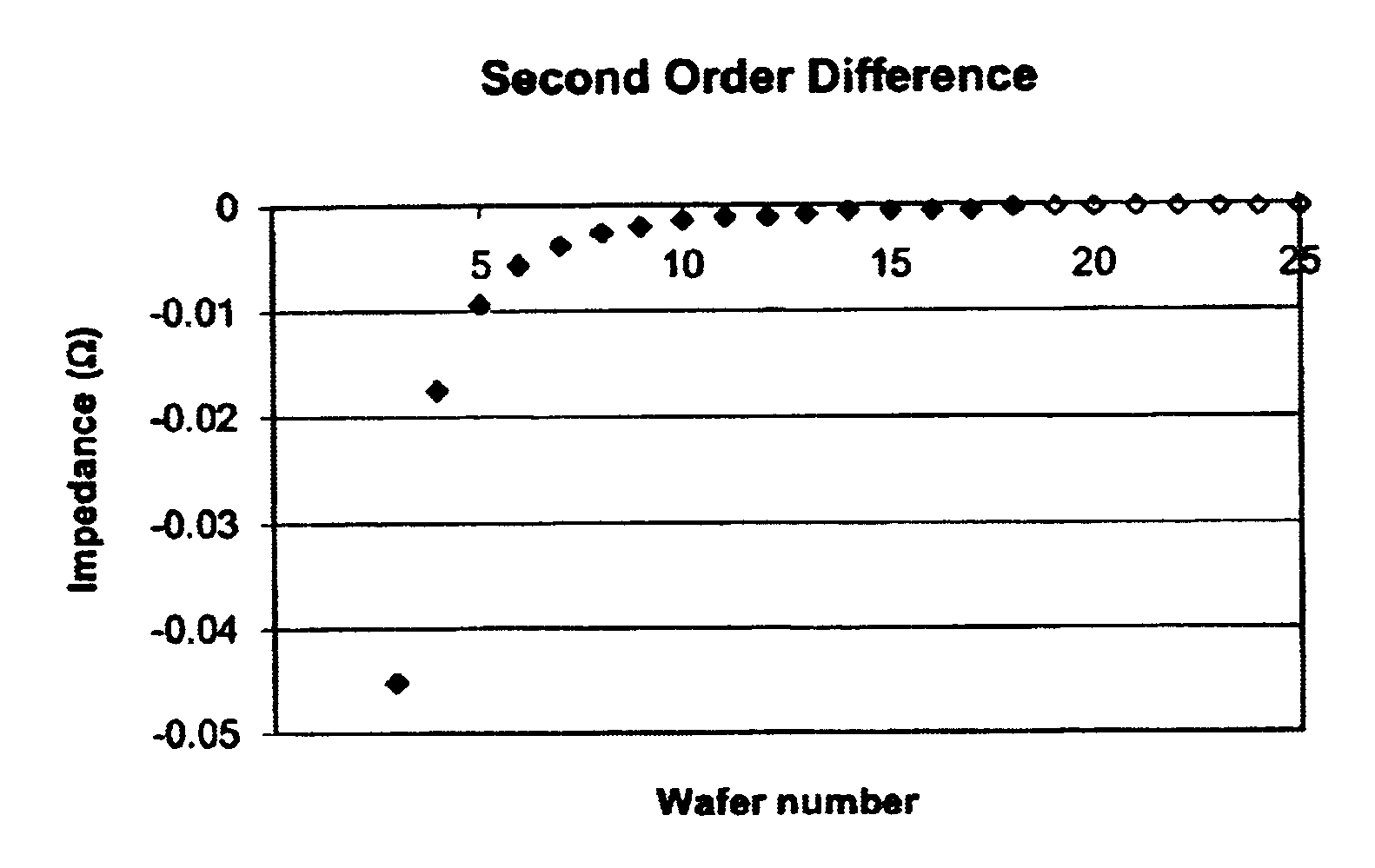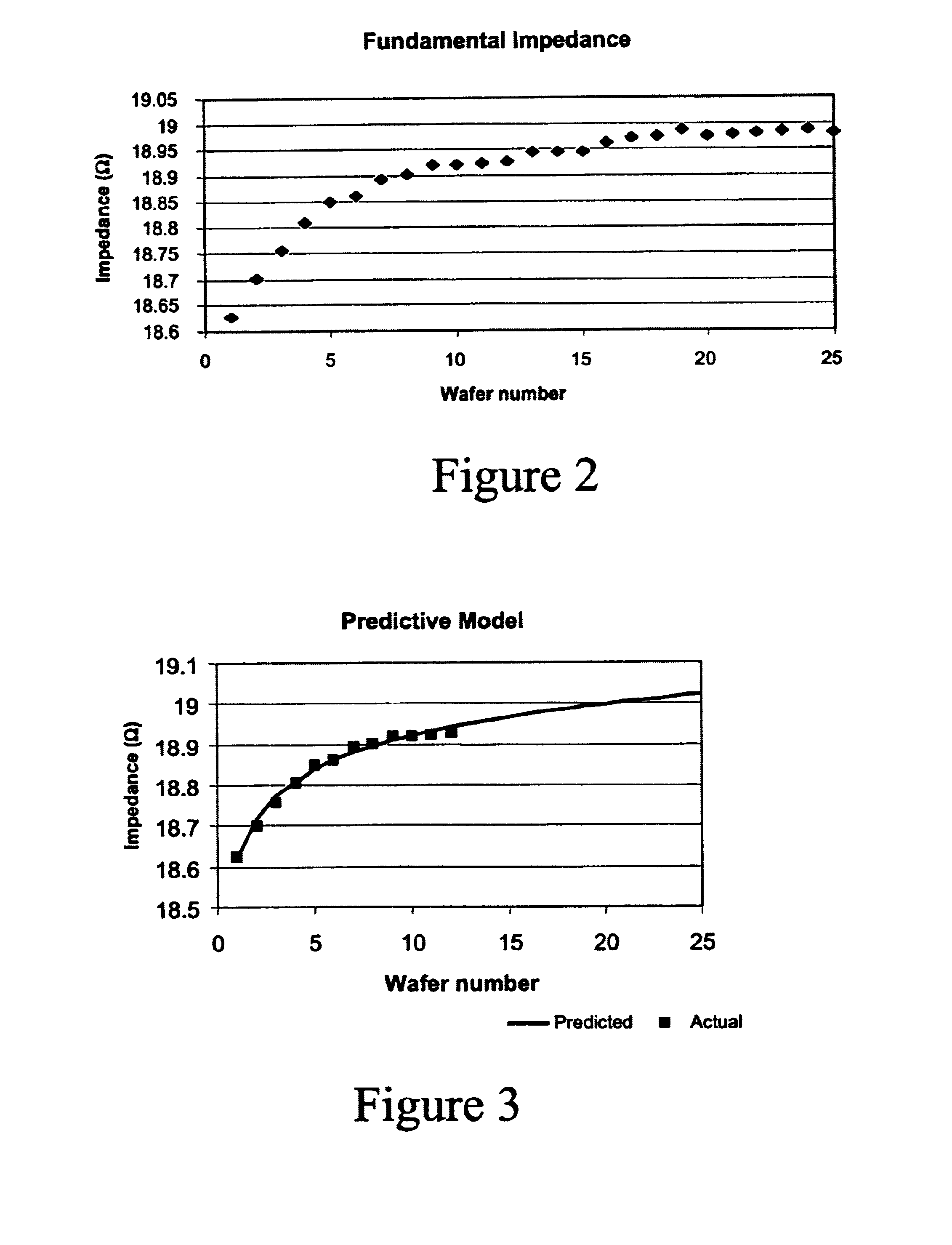Plasma chamber conditioning
a technology of plasma chamber and conditioning chamber, which is applied in the direction of electrical equipment, basic electric elements, electric discharge tubes, etc., can solve the problems of particle on the wafer surface, affecting yield, and yield loss
- Summary
- Abstract
- Description
- Claims
- Application Information
AI Technical Summary
Benefits of technology
Problems solved by technology
Method used
Image
Examples
Embodiment Construction
FIG. 1 shows a typical plasma process reactor. It includes a plasma chamber 1 containing a wafer or substrate 2 to be processed. A plasma is established and maintained within the chamber by an RF power source 3. This source generally has real impedance which must undergo a transformation to match that of the complex plasma load. This is done via match network 4. Power is coupled to the plasma chamber, typically by capacitive coupling, through an electrode 8. However, the invention also applies to systems that have more than one capacitive electrode, those that are inductively coupled or transformer coupled, helical / helicon wave systems and electron-cyclotron resonance systems. Process gases are admitted through gas inlet 7 and the chamber is maintained at a desired process pressure by removing process gases and by-products through gas exhaust line 10 using pump 11. A throttle valve 9 may be used to control process pressure in an automatic control loop.
The wafer is processed accordin...
PUM
 Login to View More
Login to View More Abstract
Description
Claims
Application Information
 Login to View More
Login to View More - R&D
- Intellectual Property
- Life Sciences
- Materials
- Tech Scout
- Unparalleled Data Quality
- Higher Quality Content
- 60% Fewer Hallucinations
Browse by: Latest US Patents, China's latest patents, Technical Efficacy Thesaurus, Application Domain, Technology Topic, Popular Technical Reports.
© 2025 PatSnap. All rights reserved.Legal|Privacy policy|Modern Slavery Act Transparency Statement|Sitemap|About US| Contact US: help@patsnap.com



